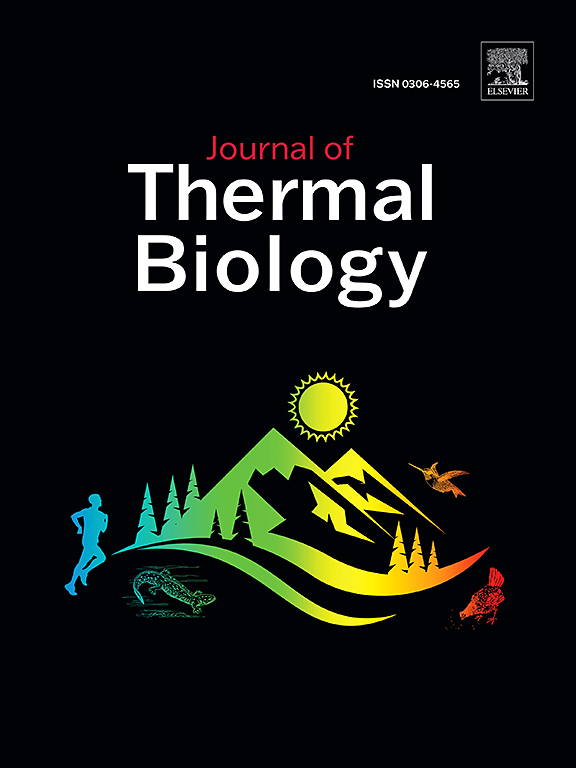Global insights from a decade of nesting data for olive ridley, green, hawksbill, and leatherback turtles: Implications for conservation in the face of climate change
IF 2.9
2区 生物学
Q2 BIOLOGY
引用次数: 0
Abstract
Sea turtles have existed on Earth for approximately 150 million years, during which time they have adapted to various environmental and oceanographic changes. However, the effects of current climate change on these reptiles are of concern due to the direct impact of temperature on sex ratio and hatching success. Low temperatures generally produce male offspring, while high temperatures favor the development of females, with an upper limit of thermal tolerance ranging between 33 and 35 °C. Global warming poses both a long-term risk of feminization of sea turtle populations and a short- and medium-term risk of decreased hatching success. The objective of this study was to evaluate the reproductive parameters of four species of sea turtles (Lepidochelys olivacea, Chelonia mydas, Dermochelys coriacea and Eretmochelys imbricata) during the last decade by carrying out a systematic review, in which 100 published articles were analyzed following the PRISMA methodology. The results revealed a significant bias towards female offspring in all species, with recorded values of up to 100 % (Lepidochelys olivacea) and 98 % (Chelonia mydas). When analyzing hatching success, it was observed that no species reaches 100 % success and that Chelonia mydas has the highest average (68.9 %), while Dermochelys coriacea records the lowest values (50.4 %). It important to note that reproductive parameters vary between species and populations. The undeniable tendency towards female offspring in all species is evident. However, this dynamic may result not only from recorded temperatures but also from the evolutionary history of sea turtles.
从十年来橄榄蠵龟、绿海龟、玳瑁和棱皮龟的筑巢数据中获得的全球见解:面对气候变化的保护意义
海龟在地球上已经存在了大约1.5亿年,在此期间,它们已经适应了各种环境和海洋变化。然而,当前气候变化对这些爬行动物的影响令人担忧,因为温度直接影响性别比和孵化成功率。低温一般产生雄性后代,高温有利于雌性的发育,耐热上限在33 ~ 35℃之间。全球变暖带来了海龟数量雌性化的长期风险和孵化成功率降低的短期和中期风险。本研究对近十年来四种海龟(Lepidochelys olivacea、Chelonia mydas、Dermochelys coriacea和Eretmochelys imbricata)的繁殖参数进行了系统评价,采用PRISMA方法对100篇已发表的论文进行了分析。结果显示,所有物种对雌性后代的偏好都很明显,记录值高达100% (Lepidochelys olivacea)和98% (Chelonia mydas)。在分析孵化成功率时,没有一种鱼的孵化成功率达到100%,平均孵化成功率最高的是绿螯虾(Chelonia mydas)(68.9%),最低的是革螨(Dermochelys coriacea)(50.4%)。重要的是要注意到生殖参数在物种和种群之间是不同的。所有物种都有雌性后代的趋势,这是不可否认的。然而,这种动态可能不仅源于记录的温度,还源于海龟的进化史。
本文章由计算机程序翻译,如有差异,请以英文原文为准。
求助全文
约1分钟内获得全文
求助全文
来源期刊

Journal of thermal biology
生物-动物学
CiteScore
5.30
自引率
7.40%
发文量
196
审稿时长
14.5 weeks
期刊介绍:
The Journal of Thermal Biology publishes articles that advance our knowledge on the ways and mechanisms through which temperature affects man and animals. This includes studies of their responses to these effects and on the ecological consequences. Directly relevant to this theme are:
• The mechanisms of thermal limitation, heat and cold injury, and the resistance of organisms to extremes of temperature
• The mechanisms involved in acclimation, acclimatization and evolutionary adaptation to temperature
• Mechanisms underlying the patterns of hibernation, torpor, dormancy, aestivation and diapause
• Effects of temperature on reproduction and development, growth, ageing and life-span
• Studies on modelling heat transfer between organisms and their environment
• The contributions of temperature to effects of climate change on animal species and man
• Studies of conservation biology and physiology related to temperature
• Behavioural and physiological regulation of body temperature including its pathophysiology and fever
• Medical applications of hypo- and hyperthermia
Article types:
• Original articles
• Review articles
 求助内容:
求助内容: 应助结果提醒方式:
应助结果提醒方式:


